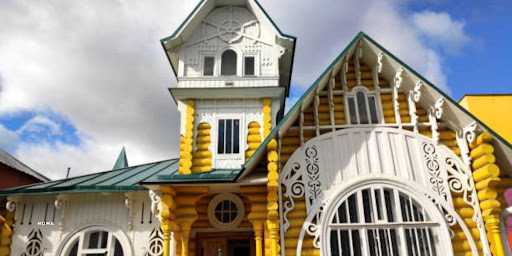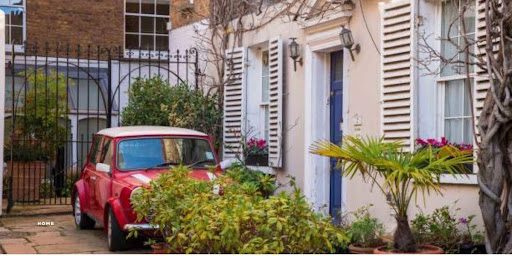Power Articles
Industry Elevating Content
Heritage Restoration: Preserving the Character of Historic Properties Through Renovation

PowerArticles
Feb. 26, 2024
Heritage restoration is about keeping the old-time charm of historic buildings alive through renovation. It’s like giving a new life to old houses while still keeping their unique character intact. Exterior home remodelling companies play a vital role in this process, as they have the skills to revitalize these properties while respecting their history and architectural features. By preserving the essence of these historic homes, we not only maintain a connection to our past but also contribute to the beauty and diversity of our neighborhoods.
Understanding Historic Properties
Historic properties are buildings or sites that hold significant historical, cultural, architectural, or archaeological value. These properties often possess unique characteristics that reflect a particular period in history, representing the cultural identity and heritage of a community or nation.
Significance of historic properties in preserving cultural heritage
Historic properties play a crucial role in preserving our cultural heritage by serving as tangible links to the past. They tell stories of bygone eras, showcasing architectural styles, craftsmanship, and societal values of their time. By maintaining these properties, we honor the achievements and struggles of previous generations, fostering a sense of continuity and identity for future generations.
Legal protections for historic properties
Many countries have enacted laws and regulations to safeguard historic properties from demolition, alteration, or neglect. These legal protections vary but often include designations such as National Historic Landmarks, local historic districts, or listings on heritage registers. These designations help raise awareness of the significance of historic properties and provide mechanisms for oversight and preservation.

Challenges of Heritage Restoration
A. Structural deterioration
One of the primary challenges in heritage restoration is addressing structural deterioration. Over time, historic properties may suffer from decay, weathering, or inadequate maintenance, jeopardizing their integrity and safety. Restoration efforts must carefully assess and address structural issues while preserving the property’s historic character.
B. Preservation of historical features
Preserving historical features presents another significant challenge in heritage restoration. Many historic properties boast intricate architectural details, decorative elements, or original materials that contribute to their significance. Balancing the need to repair or replace deteriorated features with preserving authenticity requires skillful craftsmanship and attention to historical accuracy.
C. Compliance with regulations and guidelines
Heritage restoration projects must navigate a complex landscape of regulations and guidelines to ensure compliance with preservation standards. Local zoning ordinances, building codes, and historic preservation guidelines may impose restrictions on alterations, materials, and construction methods. Adhering to these regulations while achieving the desired outcome of the restoration can be a delicate balancing act for remodeling companies.

Principles of Heritage Restoration
Heritage restoration involves preserving the unique character and historical significance of buildings through renovation. For exterior home remodeling companies, it’s crucial to understand the principles guiding this process.
1. Respect for original design and materials
One key principle is honoring the original design and materials of the historic property. This means respecting the architectural style, layout, and features that define its character. Whether it’s intricate woodwork, ornate detailing, or vintage masonry, preserving these elements maintains the property’s authenticity and historical value.
2. Documentation and research
Before starting any restoration work, thorough documentation and research are essential. This involves studying old photographs, architectural drawings, and historical records to understand the property’s original appearance and construction techniques. By gathering this information, remodeling companies can make informed decisions that stay true to the building’s heritage.
3. Integration of modern amenities while maintaining historical integrity
While preserving historical integrity is paramount, it’s also important to integrate modern amenities for practicality and comfort. This involves careful planning to seamlessly incorporate modern utilities such as heating, cooling, and electrical systems without compromising the building’s historical significance. Balancing tradition with functionality ensures that the property remains relevant and usable for contemporary living.

Techniques for Heritage Restoration
Effective heritage restoration requires specialized techniques to carefully repair, reinforce, and replicate historical elements while preserving their authenticity.
Cleaning and repairing historical features
Cleaning and repairing historical features is often the first step in restoration. This may involve delicate processes such as gentle cleaning to remove dirt and grime without damaging the original materials. Additionally, damaged or deteriorated elements like woodwork, stonework, or metalwork may need to be carefully repaired or restored to their original condition.
Reinforcement of structural elements
Structural integrity is critical for the longevity of historic properties. Reinforcement techniques such as adding support beams, braces, or seismic retrofitting help ensure that the building remains stable and safe. These interventions must be executed with precision to enhance structural strength while minimizing visual impact on the original design.
Replication of original materials when necessary
In cases where original materials are too damaged or deteriorated to salvage, replication becomes necessary. This involves sourcing or recreating materials that closely match the appearance and characteristics of the originals. Whether it’s handcrafted bricks, custom millwork, or period-specific hardware, using authentic replication techniques helps maintain the visual continuity and historical accuracy of the property.

Collaboration and Communication
When renovating historic properties, exterior home remodeling companies need to focus on collaboration and communication to preserve the property’s character. Firstly, working with preservation organizations and historians is crucial. These experts can provide valuable insights into the property’s historical significance and offer guidance on appropriate renovation techniques.
Secondly, it’s essential to communicate with clients about the importance of preservation. Many clients may prioritize modern upgrades without considering the impact on the property’s historical integrity. By educating clients about the value of preserving the character of historic properties, remodeling companies can garner support for preservation efforts.
Thirdly, coordinating with local authorities for permits and approvals is vital. Historic properties often have specific regulations governing renovations to ensure that their character is maintained. By working closely with local authorities, remodeling companies can navigate these regulations and ensure that their renovations meet preservation standards.
Conclusion
Heritage restoration is crucial for maintaining the unique charm and history of historic properties during renovation. By preserving the original character of these buildings, exterior home remodeling companies contribute to the cultural identity of communities and ensure that future generations can appreciate their rich heritage. Through careful attention to detail and adherence to preservation principles, these companies play a vital role in safeguarding our architectural legacy for years to come.
Published By
PowerArticles
Feb. 26, 2024